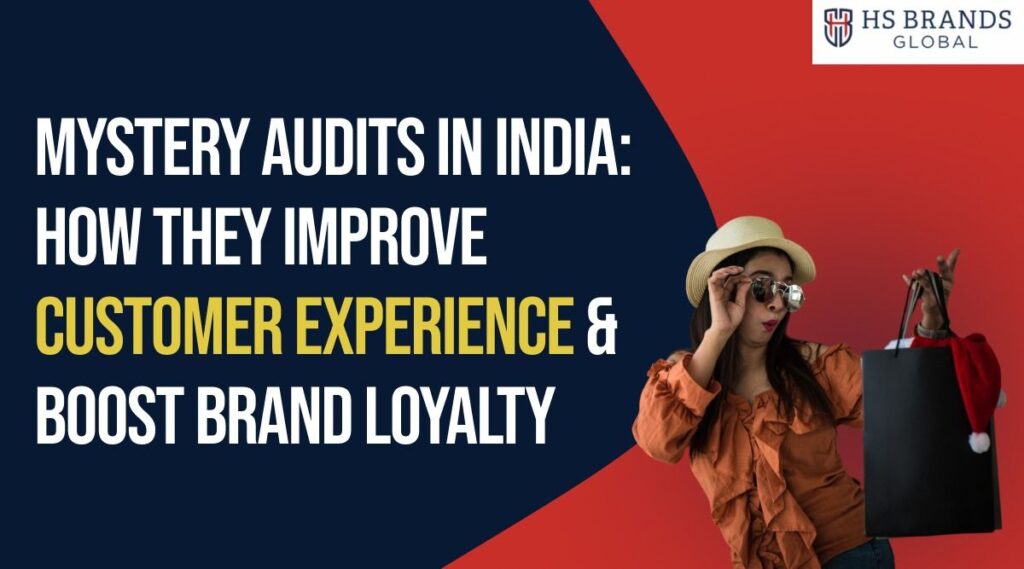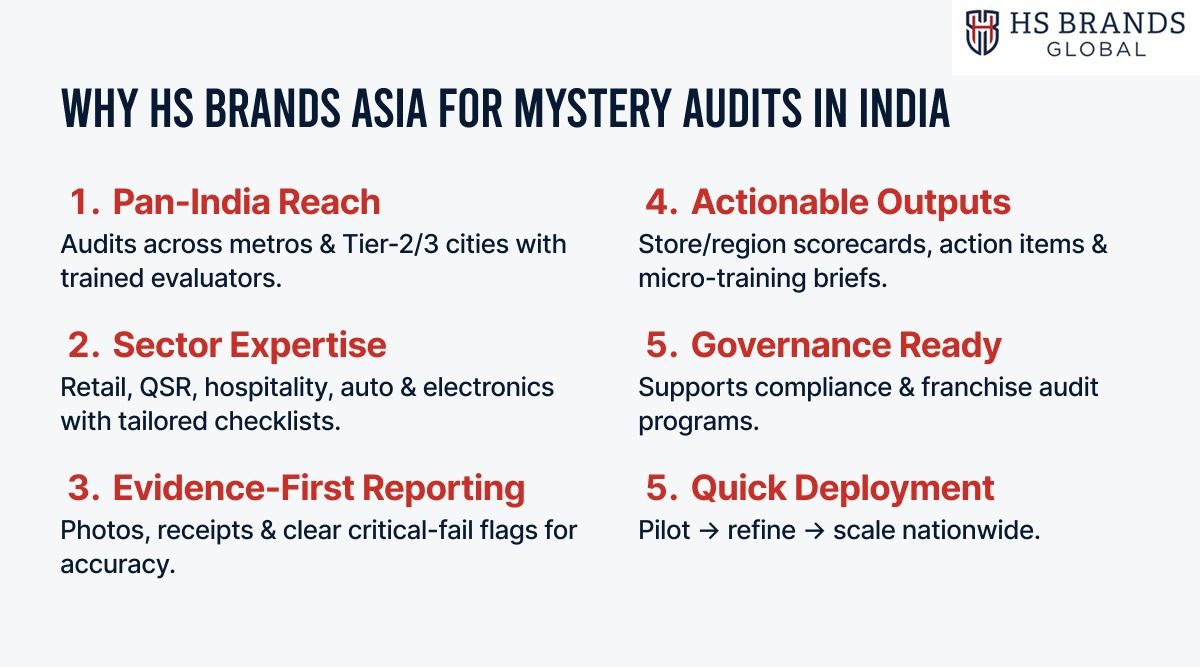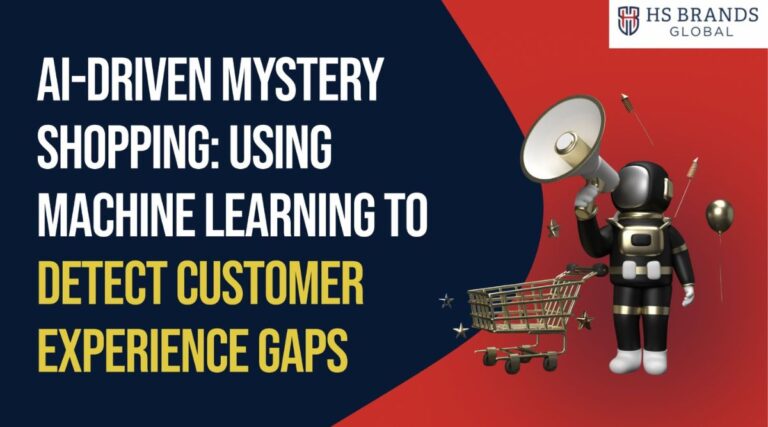In today’s experience-driven market, what your customers feel often matters more than what you sell. A single poor interaction — an indifferent staff member, an unclean store, or a missed SOP — can silently push customers away. That’s where mystery audits step in.
Unlike routine internal checks, mystery audits in India offer a real-world snapshot of how your brand performs when no one’s watching. In India, where retail, QSR, and hospitality brands are scaling across metros and Tier-2 cities, these audits help uncover service gaps, monitor compliance, and enhance consistency across locations.
Whether you’re a CX Manager trying to enforce SOPs or a franchise owner looking to replicate excellence across outlets, this guide will walk you through how mystery audits work — and why leading brands in India rely on them to gain a competitive edge.
What Are Mystery Audits?
A mystery audit is a structured evaluation conducted by trained professionals who pose as regular customers to assess the actual service, compliance, and operations of a business. The goal is to capture what really happens on the ground — not what managers think happens.
Mystery audits go deeper by examining brand standards, staff behaviour, hygiene protocols, sales processes, and SOP adherence — all using predefined checklists and scoring systems. This makes them ideal for SOP audit needs as well as broader customer experience audit programs.
Example (QSR):
• Was the food served within 3 minutes?
• Did the staff upsell or cross-sell?
• Were uniforms and name tags worn correctly?
• Was the POS receipt accurate?
By collecting this data across multiple locations and shifts, brands gain objective insights into what’s working — and what’s falling short.
At HS Brands Asia, our mystery audits in India are designed to align with your industry’s KPIs, whether you’re in retail, QSR, hospitality, automotive, or luxury. Learn more about Mystery Audit →
Why Brands in India Are Investing in Mystery Audits (2025 Trends)
In India’s hyper-competitive market, great customer experience isn’t just a value-add; it’s a differentiator. As more brands expand to Tier-2 and Tier-3 cities, maintaining consistency in service quality and brand compliance has become a serious challenge.
This is where mystery audits offer real ROI.
Key Drivers Behind the Surge in Mystery Audits
1) Rapid Retail Expansion
From apparel to electronics, national brands are scaling aggressively across geographies. Mystery audits help ensure SOPs are followed uniformly, regardless of location or staff turnover, a critical success factor for any retail audit India program.
2) Evolving Customer Expectations
Post-pandemic consumers in India demand cleaner, faster, more transparent experiences. One bad review or social post can undo years of branding, making customer experience audit insights invaluable.
3) Franchise Models Need Monitoring
Franchise and dealership formats dominate sectors like QSR, auto, and hospitality. Audits help enforce brand compliance across independently run outlets without being intrusive, effectively serving as a brand compliance audit.
4) Data-Driven Insights to Improve CX
Mystery audits aren’t just checklist exercises — they generate actionable data across stores, shifts, and staff behaviours. Over time, these reports help CX Managers and operations teams spot recurring issues, identify training needs, and measure improvements across multiple locations.
5) Cost-Efficiency Over Internal Audits
Mystery audits are often more cost-effective and unbiased than internal quality checks, especially when scaled across 100+ outlets.
Stat: According to a 2024 ET Retail study, brands that run quarterly mystery audits report up to 22% higher customer retention rates.
Core Elements Evaluated in a Mystery Audit
A well-designed mystery audit goes beyond surface-level impressions. It evaluates operational execution, brand consistency, and customer interaction quality — all through the eyes of a real-world customer.
Whether you’re running a fashion outlet, a QSR chain, or a luxury dealership, here are the common areas assessed during a typical mystery audit:
1) Staff Behaviour & Training Compliance
- Courteous and proactive interaction
- Greeting within a set time
- Proper uniforms and name tags
Poor staff interactions are a top reason for churn — mystery audits catch them early.
2) SOP Adherence
- Hygiene and sanitation protocols
- Store layout and signage as per brand guidelines
- Checkout, billing, or order-taking timelines
Perfect for an SOP audit to surface training or supervision gaps.
3) Product Knowledge & Upselling
- Accurate, confident answers to product questions
- Upsell/cross-sell of relevant items
- Mention of promotions or discounts
Directly impacts ATV, particularly in electronics and apparel.
4) Cleanliness & Visual Merchandising
- Clean, clutter-free, well-lit environment
- Displays aligned with current promotions
Even great products fall flat in poorly maintained environments.
5) Customer Journey Touchpoints
- Smooth entry-to-exit experience
- Pain-point detection (queues, signage, checkout delays)
Repeated audits create a comparative CX benchmark across outlets.
Benefits of Regular Mystery Audits
One-time checks help identify obvious issues, but regular and structured audits deliver long-term business impact. Leading brands in India now integrate mystery audits into ongoing quality, brand compliance audit, and customer experience audit strategies.
1) Improved Customer Experience (CX)
- Identify service gaps before customers complain
- Uncover friction across physical/digital touchpoints
- Reinforce positive service behaviours
2) Higher Brand Compliance
- Ensure VM and store SOPs are followed
- Catch early deviations in pricing or hygiene
- Align franchisees and managers with central standards
3) Smarter Staff Training & Recognition
- Update training based on real gaps
- Reward high-performing outlets with data-backed proof
- Track performance trends across regions or business units
4) Better Decision-Making for Operations & CX Teams
- Prioritise outlets needing support, retraining, or controls
- Detect high-risk patterns (SOP violations, poor upselling)
- Benchmark locations over time with repeatable data
5) Competitive Advantage in Crowded Markets
- Outperform competitors via consistent service
- Optimise layouts, scripts, and upsell flows
- Turn happy customers into loyal advocates
Mystery Audits vs. Mystery Shopping: What’s the Difference?
While the terms are often used interchangeably, they’re not the same — and knowing the difference helps you choose the right approach.
Mystery Audit
- Objective: Evaluate compliance with brand SOPs and operational standards
- Method: Detailed audit checklist, evidence capture
- Focus: Process, systems, staff behaviour
- Best for: Franchise models, multi-location chains, regulated industries
- Great when you need an SOP audit or brand compliance audit
Mystery Shopping
- Objective: Simulate a real customer experience end-to-end
- Method: Covert visit, scenario-based assessment
- Focus: Feelings, satisfaction, emotional journey, upsell
- Best for: Testing customer experience audit outcomes in the wild
Ready to run Mystery Audits in India?
Talk to an expert — get a tailored program and pricing.
Industry-Specific Applications of Mystery Audits in India
Retail & Fashion
- What’s checked: greeting & fitting-room etiquette, VM compliance, price/offer accuracy, queue times, returns.
- Why it matters: protects margins, reduces policy leakage, lifts conversion and ATV.
- Quick win: a 3-point upsell cue card at the cash desk; audit uptake weekly.
(Use cases align closely with “retail audit India” search intent.)
QSR & Casual Dining
- What’s checked: order accuracy & speed, hygiene SOPs, suggestive selling, digital ordering, complaint handling.
- Why it matters: faster service + consistent taste drive reviews and repeats.
- Quick win: time-and-temp logs flagged in audits → shift retraining.
Hospitality (Hotels & Resorts)
- What’s checked: check-in warmth, room readiness, housekeeping SOPs, concierge knowledge, upsell (spa/dining).
- Why it matters: improves RevPAR via ancillary revenue and better ratings.
- Quick win: front-desk script improvements lift upgrade uptake.
Automotive (Dealerships & Workshops)
- What’s checked: test-drive readiness, finance clarity, delivery inspection, service promises, post-service follow-up.
- Why it matters: increases close rates and service retention; reduces escalation.
- Quick win: plug the follow-up gap with a 24-hour callback SOP.
Consumer Electronics & Telecom
- What’s checked: demo readiness, plan clarity, accessory attach, DOA/returns, omnichannel pickup flow.
- Why it matters: higher attach rates, fewer returns via better expectation setting.
- Quick win: weekly photo audits to enforce demo-station standards.
Need an industry-specific audit playbook?
Request a proposal → or speak with HS Brands Asia.
Why HS Brands Asia for Mystery Audits in India
- Pan-India coverage: Consistent audits across metros and Tier-2/3 cities with calibrated evaluators.
- Sector depth: Retail, QSR, hospitality, automotive, electronics — checklists tailored to each format.
- Evidence-first reporting: Time-stamped photos, receipts, and clear critical-fail flags for hygiene, pricing, and safety.
- Actionable outputs: Store/region scorecards plus store-level action items and micro-training briefs.
- Governance-friendly: Supports franchise audits, compliance reviews, and brand compliance audit programs.
- Fast stand-up: Pilot in a small store set → refine → scale nationwide.
Talk to the team: HS Brands Asia • Request a mystery shopping proposal
FAQs on Mystery Audits (India)
How often should we audit?
Monthly for high-footfall formats; quarterly for lower-traffic or governance-only programs.
What does a typical visit include?
Covert evaluation, checklist scoring, evidence capture (photos/receipts), and narrative notes — ideal for an SOP audit baseline.
Can we customize the checklist?
Yes — map your SOPs to measurable checkpoints with weighted scoring and critical fails (great for retail audit India contexts).
How fast do we see results?
Pilot insights in 2–3 weeks; nationwide trend lines within 1–2 cycles.
Will staff know they’re being audited?
No — visits are covert to reflect real-world behaviour (announced audits can be added for training).








